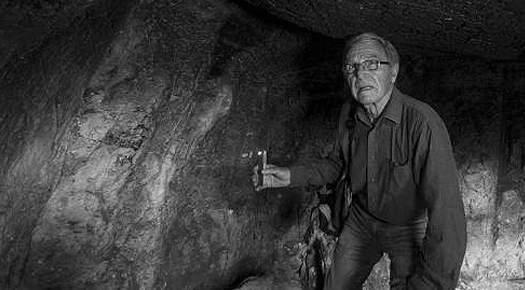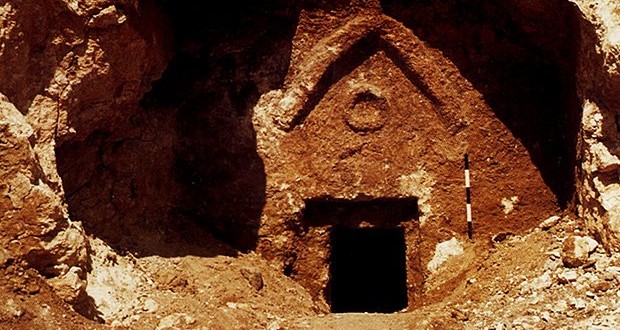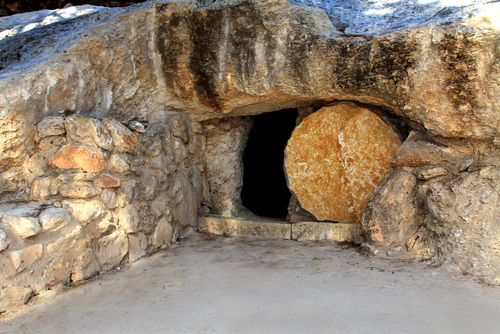
A recently finished study by an Israeli geologist has significantly increased the chances that an ancient tomb located on the outskirts of Jerusalem was the final resting place of Jesus Christ and his family members. The new findings by Aryeh Shimron made use of a chemical fingerprint to link a bone box, or ossuary, inscribed with the words ‘James, son of Joseph, brother of Jesus’ to a tomb that is located inside a rose garden amidst several ordinary apartments at a Jerusalem suburb called Talpiot. The tomb, revealed during construction in 1980, is known to contain an exclusive collection of ossuaries upon which are inscribed names that are commonly associated with the immediate family of Jesus of Nazareth.
Even though the names inside the tomb in Talpiot, including Jesus, son of Joseph, Yose, Mariamene and Maria, were commonly used in Jerusalem during the first century, an entire cluster of names associated with Christ in a single location is undoubtedly compelling, as far as statistics are concerned and unique even in the archaeological verification of Jesus’ life. As of now, if only another name could be associated with Christ’s family at Talpiot, it would emerge as a statistical snowball and help conclude almost certainly that the tomb of Jesus has been found.
“I think I’ve got really powerful, virtually unequivocal evidence that the James ossuary spent most of its lifetime, or death time, in the Talpiot Tomb,” Shimron said.
Shimron, who has worked with the Israeli Geological Survey for 25 years, believes an earthquake that occurred in 363 AD flooded the tomb in Talpiot with a semi-liquid mixture of mud and rendzina soil that left the area chemically frozen in time. According to him, this slurry embedded an inimitable geochemical fingerprint, which can be utilized for comparative analysis even today, 1,652 years later.

Shimron examined approximately 100 samples of soil and scrapings from ossuaries that were provided to him by the Israeli Antiquities Authority from 15 different tombs across Jerusalem, including Talpiot. In March this year, he was given access to James’ ossuary by its current owner, artifact collector Oded Golan, after which he finally concluded his seven-year-long study. Shimron’s discovery was remarkable, as only nine of the 100 samples from the tomb in Talpiot and James’ ossuary revealed matching geochemical profiles, containing silicon, magnesium and iron. One sample from another tomb, located only 60 meters away from the tomb in Talpiot, showed a strikingly different profile.
Shimron’s discovery offers an outright confirmation of another geochemical survey of ossuary patinas that was conducted in 2006 by journalist Simcha Jacobovici and filmmaker James Cameron and eventually depicted in the documentary titled The Lost Tomb of Jesus, a year later. Referring to the names inscribed on the ossuaries, substantiated with evidence from the Gospels and biblical scholars, the documentary concluded that the tomb in Talpiot, grossly overlooked by Israeli officials, is in fact the tomb of Christ and his family members. The film also suggested that the chances of the tomb not belonging to Christ were only one in 600, or less than one percent.

Golan, sparking a debate over the authenticity and origin of James’ ossuary, first brought it to public attention in 2002. Two years later, he was accused of forging the latter part of the inscription ‘Brother of Jesus’ on the ossuary and arrested consequently. In 2012, after eight long years of litigation, a district judge in Jerusalem ruled Golan was innocent and ordered that the ossuary be returned to him. The ruling came after Wolfgang Krumbein, an international expert in ancient patina, testified that the whole inscription was intact and authentic. Just how James’ ossuary came into Golan’s possession remains uncertain. If Shimron’s study is accurate, the ossuary was stolen from the tomb in Talpiot at some point, in either antiquity or recent history, and it somehow found its way to Golan’s personal collection.
Archaeologists and geologists believe it is too much of a coincidence for an entire cluster of names common to the New Testament to be found at the tomb in Talpiot. In 2007, after thoroughly analyzing the incidence of names in ancient Jerusalem, professor of statistics at University of Toronto, Andrey Feuerverger, said the chances of such a cluster of names, however common each name was, was highly improbable unless they all belonged to the family of Jesus Christ.

Jacobovici said if Shimron has succeeded in proving that James’ ossuary came from the tomb in Talpiot, the evidence can no longer be ignored.
“The archaeology, the epigraphy, the statistics and, now, the hard chemical evidence all tell the same story. It’s arguably the most important archaeological find of all time,” he said.
Photo Credits: MSNBC
